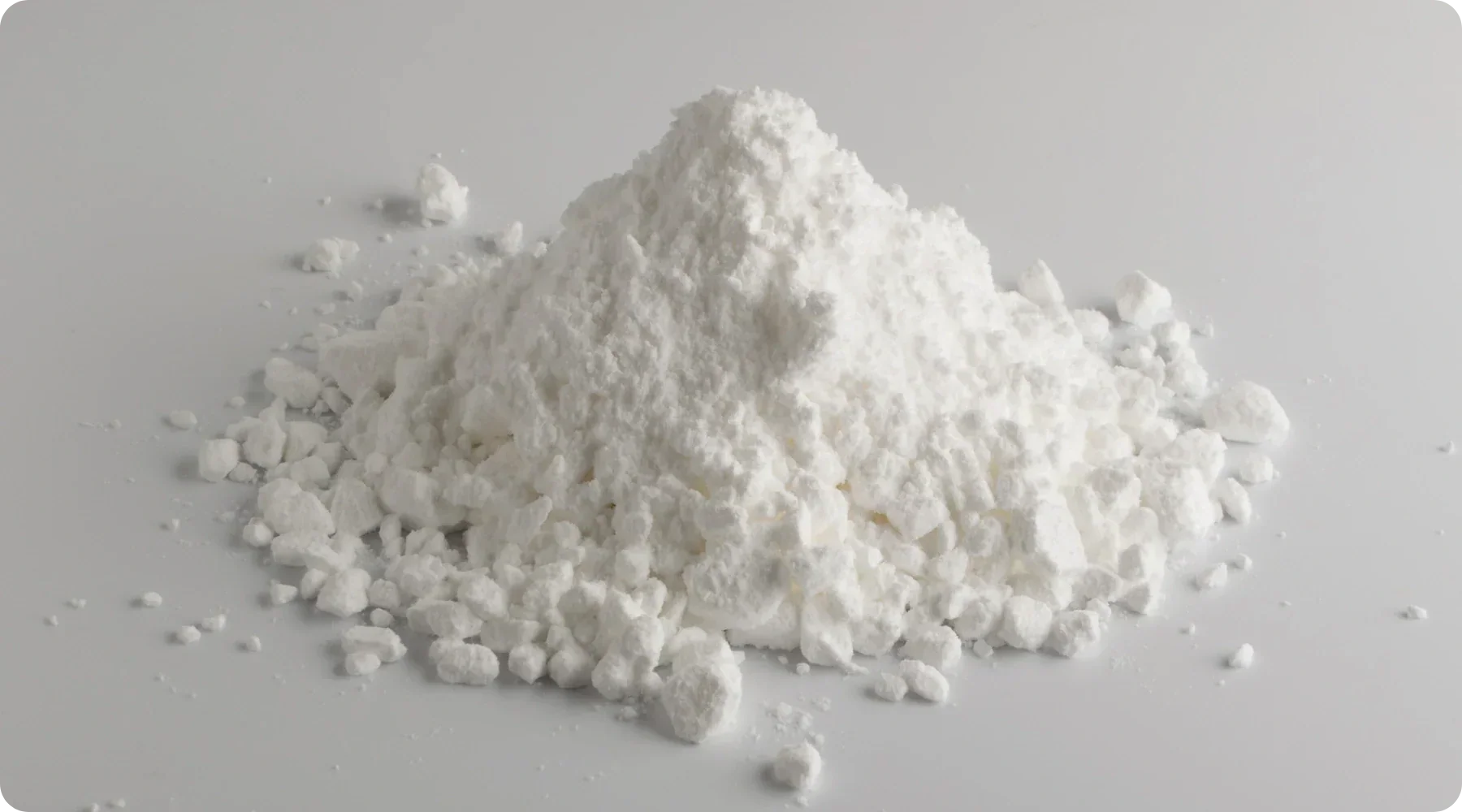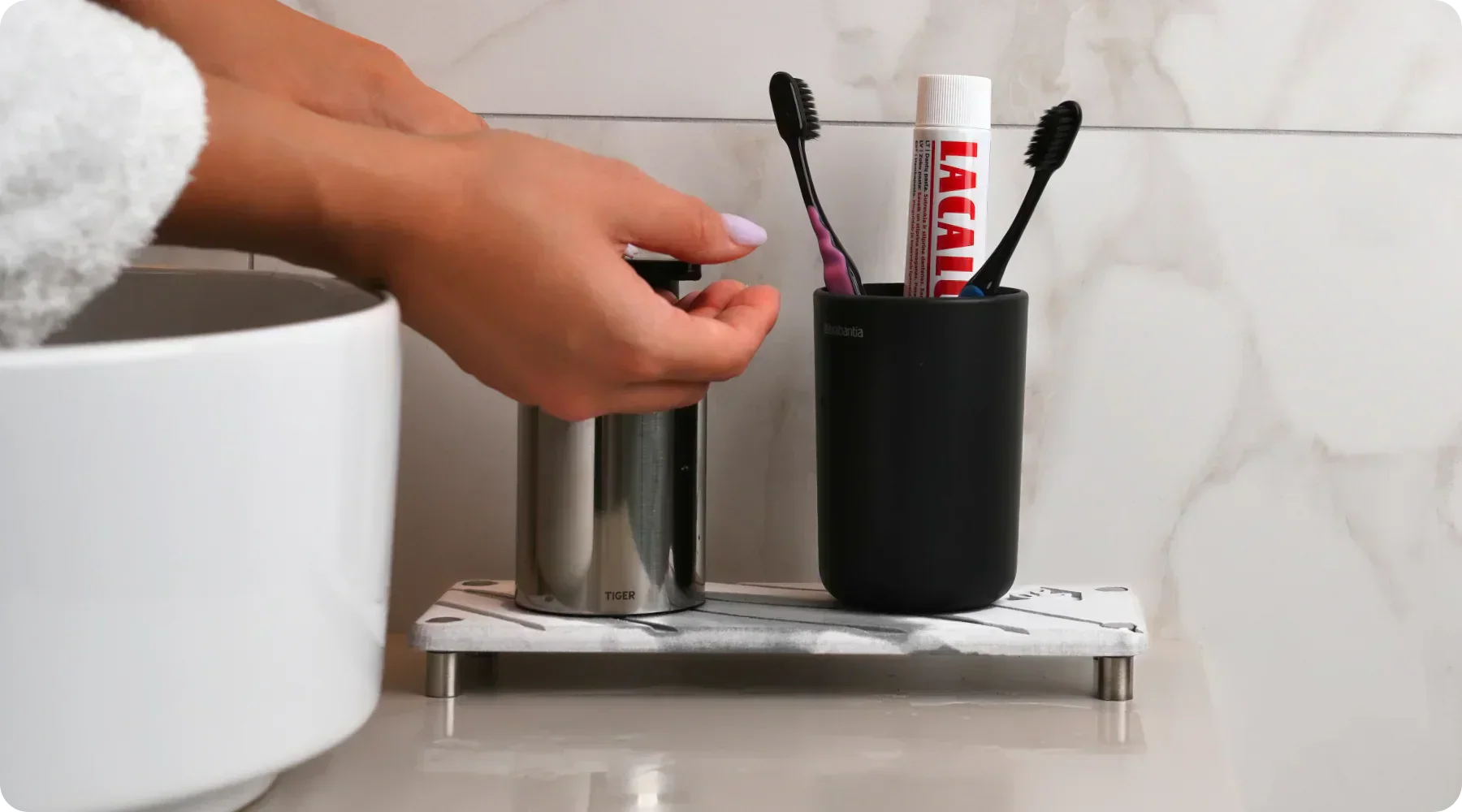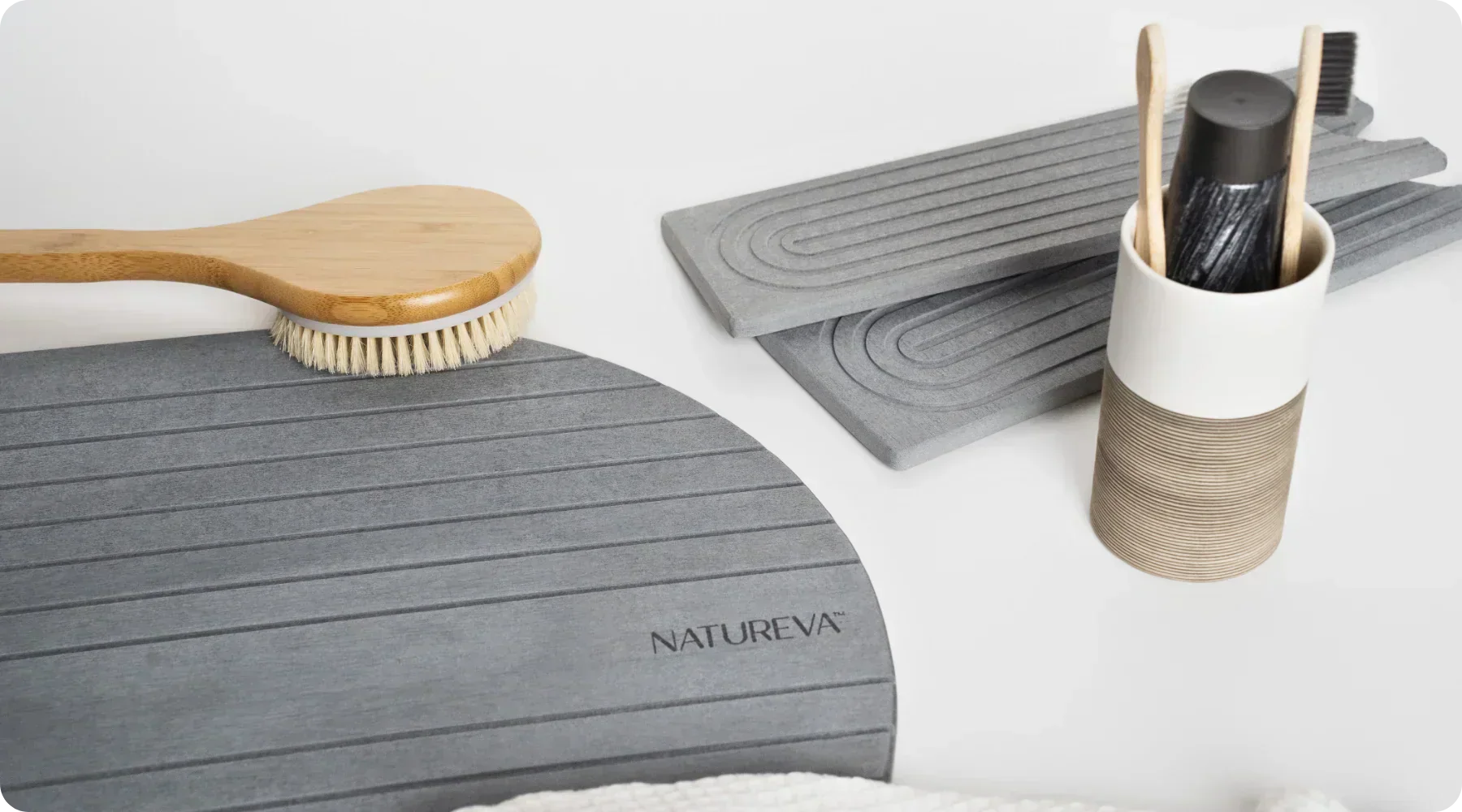
Diatomite 101: The Natural Mineral Behind Quick‑Dry Living
Diatomite 101: The Natural Mineral Behind Quick‑Dry Living
Diatomite — often called diatomaceous earth — is the quiet hero inside Natureva’s quick‑dry accessories. From bath mats to dish mats and faucet pads, this natural mineral changes how water behaves on contact. Instead of soaking fabric and lingering for hours, droplets meet a surface that looks like stone but acts like a sponge, pulling moisture into microscopic channels and releasing it back into the air. The result is a cleaner, calmer home with less laundry, fewer odours, and a more sustainable footprint.
What Exactly Is Diatomite?
Diatomite forms from the fossilised shells of tiny algae called diatoms. Each diatom builds a delicate exoskeleton (called a frustule) out of silica, full of ornate holes and ridges. When billions of these organisms settle over time, they create deposits that can be mined and shaped into useful items. The beauty of diatomite is structural: even after processing, it retains an intricate honeycomb that behaves like a capillary network. Water doesn’t sit on the surface; it’s pulled inward, spread across enormous internal area, and evaporates quickly.
Under a microscope, a diatomite surface looks like lace. That lacework provides huge effective surface area, which is why a stone bath mat or dish mat feels dry again within minutes. There’s no sponge layer to stay soggy, no trapped fibres to harbour mildew. It’s the same physics that makes soil drain or a wick draw liquid upward — only here it’s harnessed for everyday home routines.
A Short History of a Very Small Giant
Diatoms have existed for tens of millions of years, quietly pulling carbon from the atmosphere and locking it into silica structures that ultimately become sediment. Humans have used diatomaceous earth for filtration, gentle abrasives, agriculture, even art pigments. Only recently has its potential as a household surface gained momentum. Advances in forming diatomite panels and slabs mean we can create accessories that are thin, durable in home use, and beautifully matte — ideal for minimalist interiors.
How the Quick‑Dry Magic Works
- Micro‑porosity: Millions of pores act like tiny straws that draw water in by capillary action.
- Rapid evaporation: The internal area is so large that moisture spreads and evaporates fast.
- No fibres: Unlike textiles, there are no threads to hold onto water or odours.
- Reset time: Surfaces return to a dry, matte feel in minutes, ready for the next person.
That’s why stone bath mats and dish mats feel “self‑drying.” They don’t need a heater or a fan — the structure does the work. And because they don’t require machine washing, you also avoid the hidden water and energy costs that come with fabric maintenance.
Everyday Wins You’ll Notice
- Cleaner sinks and benches: A stone faucet mat catches splash so it never spreads.
- Fresher bathrooms: Step onto a stone bath mat that dries between showers.
- Easier dish duty: A stone dish mat pulls water off glassware and pans fast.
- Tidy organisation: A stone sink caddy gives wet tools a breathable base.
- Protected shelves: stone plant saucers drink up small over‑watering.
These changes seem small, but they compound. When surfaces dry themselves, you wipe less, wash less, and your home smells fresher. There’s less visual clutter too — a calm, matte mineral reads cleaner than a damp cloth.
Sustainability: Why Material Choice Matters
Traditional textile accessories carry a hidden cost: water for growing fibres, chemicals for dyeing, energy for spinning and weaving — and then years of machine washing to keep them usable. By contrast, diatomite items are formed with near‑zero water and under 1 kWh of energy, and they avoid weekly wash cycles entirely.
- Water use: Cotton bath mats can require up to 13,000 L of water to produce. A diatomite mat uses almost none.
- Energy: Cotton and polyester mats require ~14–18 kWh in production; diatomite is typically <1 kWh.
- Carbon: Lower process energy + no laundry during use means a dramatically smaller footprint over the product’s life.
And at the end of life? Diatomite is a natural mineral. It can be crushed and safely returned to the earth without microplastic shedding or dye runoff.
Diatomite vs Fabric and Plastic: A Practical Comparison
| Property | Diatomite | Cotton/Polyester | Silicone/Plastic |
|---|---|---|---|
| Dry time | Minutes | Hours | Stays wet |
| Odour control | High (no fibres) | Low to medium | Low (water pools) |
| Maintenance | Wipe + light sanding | Frequent machine washing | Frequent wiping/bleach |
| Resource use |
Near‑zero water, <1 kWh |
13,000 L water; 14–18 kWh | Petrochemical |
| Look & feel | Matte mineral | Textile | Glossy plastic |
Where Diatomite Shines (Room by Room)
Bathroom
Place a stone mat right outside the shower or tub. Water disappears in seconds, and the floor stays safe. Pair with a stone sink caddy on the vanity so toothbrush cups and soap bars dry between uses. Finish with bamboo‑cotton towels for comfort without bulk.
Kitchen
Use a stone dish mat beside the sink for daily items and produce. Add the faucet mat to catch splash at the source, and corral tools on a stone caddy. For serving, protect tables with stone coasters.
Plant Corners
Set pots on stone saucers to buffer light over‑watering and protect timber shelves. The breathable base discourages stagnant water and helps roots.
Design Psychology: Why Stone Looks “Cleaner”
Visual noise increases stress. Materials with busy textures or visible wetness signal “unfinished” to the brain. Diatomite’s matte finish and fast dry time reduce that noise. The palette (think sand, stone, cloud) pairs with most interiors, so your eye doesn’t trip on dark wet patches or shiny plastic trays. Small effect, big feeling.
Care & Refresh
- Weekly: Wipe with a damp cloth and mild vinegar‑water mix.
- Every few months: Lightly sand to refresh absorbency and remove marks.
- If saturated: Air‑dry fully in a ventilated space, out of direct sunlight, until colour returns.
FAQs
Will diatomite crack?
It’s robust in household use. Avoid drops and hard impacts, just as you would with ceramic.
Does it stain?
Wipe spills promptly; most marks sand away gently.
Is it safe around pets and kids?
Yes, it’s an inert mineral surface designed for home use.
End of life?
It’s a natural material that can be crushed and returned to the earth.
Try the Quick‑Dry Upgrade
Explore Natureva’s collection to build a calmer, cleaner routine:


